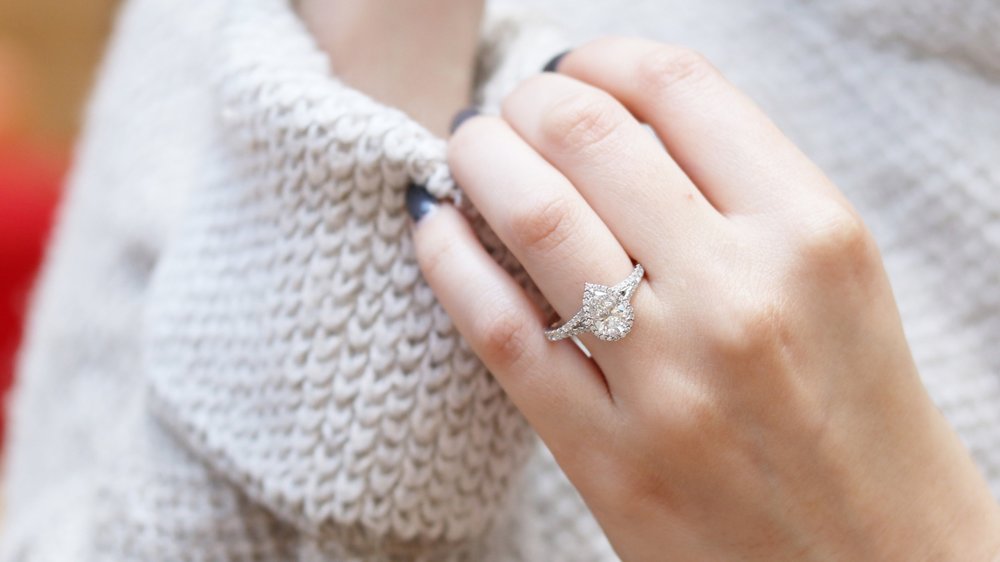Lab-grown diamonds have become a popular alternative to mined diamonds in recent years. These diamonds are made of the same carbon as mined diamonds, but they differ in composition and structure; the differences are due to the creation process. For example, VRAI lab-grown diamonds are created using the CVD method. This method is more economical, sustainable, and environmentally friendly, as their creation requires less energy consumption. Once the diamond is fully formed through this process, it’s passed to the experts who cut and polish the stones.
By choosing a VRAI lab-grown diamond, you’re not just saving money but also the planet. Lab-grown diamonds have become an environmentally and financially responsible way to have a diamond engagement ring. They’re virtually indistinguishable from mined diamonds. The only way to tell the difference between the two is with specialized equipment that analyzes the makeup of the stone. These diamonds come in all the same shapes, sizes, and colors as mined diamonds, so if you’re looking for something large or unique, a lab-grown diamond is an excellent option.
If you decide a lab-grown diamond is suitable for you, there are some things to keep in mind as you care for your diamond over the years. Here are seven ways to make sure your lab-grown diamond will stand the test of time.
Making Your Lab-Grown Diamond Last
- Be Smart About the Setting: Choosing the right setting for your lab-grown diamond is an important step to ensuring your diamond will last. Certain settings allow for more damage to the stone than others, so be sure you choose a setting that works with the shape and size of your stone.
- Avoid Exposure to Soap: Remove your diamond before showering, washing your hands, or doing the dishes to maintain its appearance. Soap and shower gels may cause harm to your lab-grown diamond over time; this is also true for lotions, perfumes, hairsprays, and skin oils. Try to avoid exposing your diamond to any of these things.
- Remove Before Cleaning: In addition to soaps and gels damaging your stone, cleaning products are another area to be mindful of; this is especially true for anything containing bleach. Before doing any heavy cleaning in your home, make sure to remove your ring and store it somewhere safe until you’re done.
- Don’t Sweat With Your Ring: If you’re heading to the gym or working outdoors on a hot day, it’s best to take off your ring. Sweat produces deposits that can dim your lab-grown diamond’s luster.
- Store It Properly: When you’re not wearing your diamond, it’s crucial to store it somewhere safe and out of harm’s way. Unsafe storage methods can cause damage to diamonds, making them lose their luster. After removing your diamond, place it in a loose, soft cloth or jewelry bag. You can then place the cloth or bag in a jewelry box to ensure it doesn’t get damaged.
- Clean at Home: One way to maintain the appearance of your diamond is to clean it regularly at home. You should aim to clean your ring about once a week using a mix of mild dish soap diluted with water. You can also use a white vinegar solution to clean your diamond. Before soaking, use a soft toothbrush to remove any dirt or debris. You can also purchase a special polishing cloth to help keep your stone brilliant.
- Professional Cleaning: In addition to cleaning your ring at home, you can also have your ring cleaned professionally a couple of times a year. Professional jewelers have special equipment that uses steam and ultrasound technology to clean your stone. Professional cleanings also include a thorough inspection of your diamond, along with polishing and tightening of the prongs, if necessary.

Choosing a Lab-Grown Diamond
With diamond alternatives gaining popularity, prospective brides have a variety of choices to make when choosing a stone for their engagement ring. If you’re set on a mined diamond but aren’t thrilled about the high price point or ethical and environmental implications, a lab-grown diamond is one of the best alternatives on the market. Being that the maintenance is not much more than that of a mined diamond and they share the same appearance, a lab-grown diamond is a true comparable alternative.

